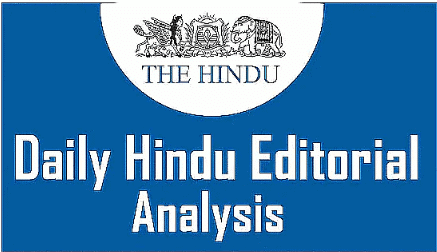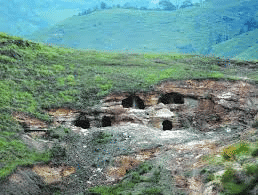The Hindu Editorial Analysis- 16th January 2025 | Current Affairs & Hindu Analysis: Daily, Weekly & Monthly - UPSC PDF Download

The Red Flag as China’s Expansionist Strategy Rolls On
Why in News?
India is confronting Chinese assertiveness along its border, particularly through territorial claims and hydropower projects that jeopardize India's sovereignty, regional stability, and water security.
Chinese Aggression Along the India-China Border
- Recently, India encountered two significant incidents of Chinese aggression at its border:
- The announcement of a dam on the Yarlung Zangbo River (known as the Brahmaputra in India) by China.
- The establishment of two new counties by China in northeastern Ladakh, which India claims.
- India condemned these actions as illegal and a direct threat to its sovereignty.
- India is particularly concerned about China’s hydropower project on the Yarlung Zangbo River and is closely monitoring the situation to protect its national interests.
- These developments come after agreements for troop disengagement along the Line of Actual Control (LAC), showcasing China’s unpredictable and aggressive posture despite previous agreements.
Transboundary Water Issues
- China ’s actions impact not only India but also other South Asian countries like Nepal and Bhutan, which are facing territorial encroachments by China.
- China ’s unilateral management of transboundary rivers such as the Brahmaputra and the Indus poses a significant threat to water security in India and its neighboring countries, including Nepal, Bangladesh, Bhutan, and Pakistan.
- The proposed dam by China on the Yarlung Zangbo River has the potential to generate approximately 300 billion kilowatt-hours of electricity annually. However, it also poses several risks for the downstream countries.
- One major concern is that the dam could reduce the flow of water and silt downstream, which would have detrimental effects on agriculture, fisheries, and biodiversity in India and Bangladesh.
- Additionally, the dam’s uncontrolled release of water during monsoon seasons or geopolitical tensions could lead to catastrophic flooding in India, exacerbating the risks associated with China’s dam project.
- In response to this challenge, India is investing $1 billion to expedite the development of 12 hydropower projects in Arunachal Pradesh, aiming to enhance its own water and energy security in the region.
Border Disputes and Cartographic Aggression
- China has escalated its cartographic aggression by renaming locations, establishing new counties, and incorporating disputed regions into its official maps.
- In Ladakh, China’s actions are aimed at asserting control over contested territories, while it also lays claim to Arunachal Pradesh, a region that India considers an integral part of its territory.
- Beyond its disputes with India, China has overlapping territorial claims with Nepal and Bhutan, further complicating regional relations.
- While China’s cartographic assertions lack legal validity under international law, its establishment of settlements in disputed areas makes sovereignty claims more challenging for affected countries.
The South Asian Response
- South Asian nations, including India, typically address their disputes with China on a bilateral basis. This approach contrasts with Southeast Asian nations that utilize multilateral mechanisms such as the Mekong River Commission and ASEAN to manage their disputes with China.
- As a regional leader, India has a crucial role in fostering a collective South Asian response to counter China’s territorial and water-related actions.
- Strengthening regional forums, multilateral institutions, and diplomatic coordination can enhance South Asia’s position in dealing with China’s assertiveness.
- A unified approach among South Asian nations is essential to safeguard India’s sovereignty and ensure regional security against China’s growing influence and territorial claims.
Conclusion
- China’s recent actions along the India-China border, particularly its announcement of a dam on the Yarlung Zangbo River and the creation of new counties in disputed territories, underscore its expansionist policies that threaten India’s sovereignty and regional stability.
- These developments highlight the need for a unified response from South Asian nations to address the challenges posed by China’s aggressive territorial claims and management of transboundary water resources.
- Strengthening diplomatic efforts, regional cooperation, and multilateral engagement are crucial to counter China’s assertiveness and ensure the security and stability of the region.
India must learn from its mining disasters and enforce regulations
Why in News?
The recent coal mining accident in Assam's Dima Hasao district has raised significant concerns about the dangers associated with rat-hole coal mining. This traditional method of coal extraction, which involves digging narrow tunnels into the ground, poses serious risks to the safety of workers and the environment.
What is Rat-Hole Mining? 
- Rat-hole mining is a method where workers, often including children, manually extract coal from narrow tunnels dug into the ground.
- This method is highly unsafe due to risks such as flooding, tunnel collapses, and poor ventilation.
- Rat-hole mining lacks mechanisation and proper geological surveys, making it a hazardous practice.
- It is commonly found in northeastern India, particularly in states like Meghalaya and Assam.
Ban and Continuation of Rat-Hole Mining
- In 2014, the National Green Tribunal (NGT) banned rat-hole mining due to its health, safety, and environmental risks.
- However, the demand for coal to power cement and thermal plants has sustained illegal mining activities in the northeast, despite the ban.
- Proper geological surveys and mechanisation could make rat-hole mining uneconomical, discouraging its continuation.
State Administration and Illegal Mining
- Assam's Chief Minister acknowledged that the Dima Hasao mine was likely illegal and abandoned by the State's Mines and Minerals Department.
- This highlights administrative lapses, as illegal mining activities continue to thrive despite the ban.
- In 2019, the Supreme Court questioned the possibility of such mining continuing without the involvement of officials.
Exploitation and Recognition of Miners
- Unregulated mining is widespread, despite numerous accidents and fatalities.
- Authorities have, paradoxically, sought assistance from rat-hole miners during crises, such as in Uttarkashi in 2023, when advanced technology failed.
Need for Decisive Action
- Tragedies like the one in Dima Hasao often lead to temporary attention followed by inaction until another accident occurs.
- To prevent future tragedies, it is crucial to disrupt the economic viability of rat-hole mining through strict enforcement and the development of better alternatives.
Conclusion
Rat-hole mining continues to pose significant risks despite bans and repeated accidents. To prevent further loss of lives and environmental damage, it is essential to ensure stringent enforcement, promote sustainable alternatives, and disrupt the economic incentives that sustain this hazardous practice.
|
38 videos|5293 docs|1118 tests
|
















